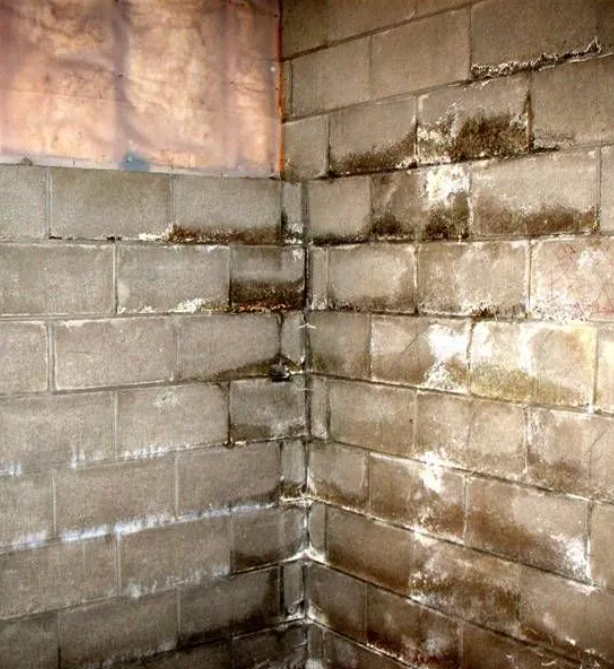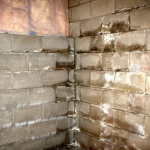Foundation Waterproofing Methods: Protecting Your Home from Water Damage
Are you concerned about water damage in your home? If so, foundation waterproofing is a great way to protect your investment. Your home’s foundation is a critical component, and keeping it dry is essential to ensure the structural integrity and longevity of your property. There are various foundation waterproofing methods available, each with its advantages and suitability for specific situations. In this article, we’ll explore some of the most popular foundation waterproofing materials and methods to help you make an informed decision.
1. Exterior Coating: Shielding Your Home from the Elements
One of the most popular and widely utilized methods of foundation waterproofing is the application of an exterior coating. This method of concrete waterproofing serves as a robust defense against moisture infiltration, protecting your home’s foundation from the adverse effects of water. Let’s delve deeper into the details of this effective technique.
How Exterior Coating Works
Exterior coatings are designed to create a barrier between your foundation and external moisture sources. They act as a shield, fending off rainwater, groundwater, and other environmental elements that could potentially seep into your home’s concrete foundation. The primary purpose is to keep your foundation dry and maintain its structural integrity.
There are several types of materials commonly used in exterior coatings, including:
- Asphalt-Based Compounds: Asphalt-based coatings are time-tested and known for their durability. They provide a sturdy and water-resistant layer to protect your foundation. However, they might not be as flexible as other options, making them more susceptible to cracking in extreme temperature fluctuations.
- Cementitious Coatings: These coatings are a mix of cement and various additives, creating a durable and waterproof layer. They offer excellent adhesion to the foundation and can withstand both wet and dry conditions.
- Elastomeric Coatings: Elastomeric coatings are known for their elasticity, allowing them to expand and contract with the natural movements of your foundation. This flexibility makes them ideal for regions with varying weather conditions. They also offer superior resistance to cracks and are highly effective in preventing water intrusion.
The Benefits of Exterior Coating
- Comprehensive Protection: Exterior coatings provide an external shield, safeguarding your foundation from moisture, reducing the risk of damage, and extending the life of your foundation.
- Enhanced Curb Appeal: Many exterior coatings come in aesthetically pleasing finishes, which can improve the appearance of your home’s exterior. This added curb appeal is an attractive bonus for homeowners.
- Reduced Maintenance: Once properly applied, exterior coatings require minimal maintenance. They are an excellent long-term solution for foundation waterproofing.
- Preventative Measure: Exterior coatings can act as a preventative measure to reduce the risk of future damage. They can seal minor cracks or imperfections in the foundation before they become significant issues.
Professional Application
While exterior coatings offer numerous benefits, it’s crucial to emphasize that their effectiveness largely depends on the quality of the application. It’s recommended to hire a professional waterproofing expert for this task. These experts will assess the specific needs of your foundation and apply the appropriate coating, ensuring it adheres correctly and provides the necessary protection.
Foundation waterproofing through exterior coatings is a reliable and widely used method to protect your home from water damage. By creating a robust barrier between your foundation and external moisture sources, these coatings play a crucial role in preserving the structural integrity and longevity of your property. When professionally applied, they offer long-lasting protection and peace of mind, ensuring your home remains a safe and dry haven, even in the face of adverse weather conditions.
2. French Drains: The Water Diversion Solution for Your Foundation
French drains are a versatile and effective foundation waterproofing method, often used to manage excess moisture around homes and protect foundations from the detrimental effects of groundwater infiltration. In this section, we’ll delve deeper into the details of French drains, explaining how they work and why they are an excellent choice for many homeowners.
How French Drains Work
A French drain, named after Henry French, the 19th-century Massachusetts judge who popularized the design, is essentially a trench filled with gravel or aggregate material and a perforated pipe. The purpose of building this system is to capture and divert water away from the foundation, preventing it from pooling around the base of your home.
Here’s a breakdown of how French drains function:
- Trench Construction: A trench is excavated around the perimeter of your home or in areas where water tends to accumulate. The depth and width of the trench can vary depending on the specific needs of your property.
- Gravel and Pipe: Gravel or aggregate material is placed at the bottom of the trench. A perforated pipe, often covered with a fabric sock to prevent clogs, is then laid on top of the gravel.
- Drainage and Diversion: As water from the soil seeps into the trench, it collects in the gravel and is channeled into the perforated pipe. The pipe directs this water away from your home’s foundation and safely discharges it elsewhere, ensuring it doesn’t contribute to moisture buildup.
Benefits of French Drains
French drains offer numerous advantages for homeowners seeking to manage water around their foundation effectively:
- Prevent Foundation Damage: By diverting water away from your foundation, French drains help prevent soil erosion and hydrostatic pressure. This, in turn, reduces the risk of cracks, shifting, and other forms of structural damage.
- Reduced Risk of Basement Flooding: French drains are especially valuable in areas prone to heavy rainfall or with poor drainage. They significantly lower the risk of basement flooding and water seepage.
- Long-Lasting Solution: Once installed, French drains require minimal maintenance. They provide a long-term solution for moisture management and foundation protection.
- Versatility: French drains can be tailored to suit various landscapes and foundation types. They are equally effective in preventing water intrusion in crawl spaces and full basements.
- Enhanced Curb Appeal: While primarily functional, French drains can also improve your property’s aesthetics when well-designed and integrated with your landscaping.
Professional Installation
While the concept of French drains may seem straightforward, professional installation is crucial to their effectiveness. An experienced waterproofing contractor will assess your property’s specific needs, ensuring the right type and placement of French drain to address your concerns.
In conclusion, French drains are a highly effective solution for foundation waterproofing and moisture management. They play a vital role in preserving the structural integrity of your home by diverting water away from the foundation and reducing the risk of damage. Whether you live in an area with heavy rainfall or simply want to ensure the long-term stability of your property, French drains can be a valuable addition to your home’s defense against water infiltration.
3. Interior Moisture Barriers: Protecting Your Home from Within
Interior moisture barriers are a specialized method of basement window foundation waterproofing designed to prevent moisture intrusion through the interior walls of your basement or foundation. These barriers act as a final line of defense against water seepage, offering unique advantages for homeowners concerned about the potential for moisture-related issues. In this section, we’ll explore interior moisture barriers in more detail, explaining how they work and their benefits.
How Interior Moisture Barriers Work
Interior moisture barriers are typically constructed using waterproof materials like plastic or rubber. These materials are applied to concrete walls or installed on the interior side of basement walls, creating a barrier between the foundation and the living space. Here’s how they work:
- Material Selection: Waterproof materials, such as high-density polyethylene (HDPE), thermoplastic rubber, or dimpled membranes, are used to create the moisture barrier. These materials are impermeable to water and highly resistant to hydrostatic pressure.
- Installation: The barrier is either applied directly to the interior wall as a continuous layer or installed as sheets or panels. In some cases, it may be combined with a drainage system to collect and direct any moisture that does penetrate the barrier away from the interior.
- Sealing Joints: To ensure complete protection, all joints, seams, and penetrations in the barrier are meticulously sealed to create a watertight seal. This prevents moisture from finding its way into your living space.
Benefits of Interior Moisture Barriers
- Effective Moisture Control: Interior moisture barriers offer excellent moisture control, preventing water from entering your living spaces through the foundation. This is especially valuable in areas with high groundwater levels or where exterior waterproofing may be challenging.
- Improved Air Quality: By reducing moisture intrusion, these barriers help create a healthier indoor environment. They inhibit the growth of mold and mildew, which can thrive in damp conditions, and thus contribute to better air quality.
- Versatility: Interior moisture barriers can be installed in both finished and unfinished basements, as well as crawl spaces. This makes them a versatile solution for various types of properties.
- Cost-Effective: Compared to some exterior waterproofing methods, interior moisture barriers can be more cost-effective, as they require less excavation and landscape disruption.
- Minimal Maintenance: Once installed, interior moisture barriers require minimal maintenance. Periodic inspections to ensure no damage or breaches are usually sufficient.
Professional Installation
The successful installation of interior moisture barriers is a highly specialized task that requires professional expertise. Waterproofing professionals assess your specific needs and design a tailored solution that offers optimal protection. They also ensure the correct installation of the barrier and address any potential issues that may arise during the damp-proofing process.
In conclusion, interior moisture barriers are a valuable method of foundation waterproofing, particularly in situations where exterior solutions are not feasible or cost-effective. They provide reliable protection against moisture intrusion, enhancing the longevity of your foundation and creating a healthier indoor environment. Whether you have a finished basement or a crawl space, interior moisture barriers are a versatile and cost-effective solution for keeping your home dry and comfortable.
4. Crack Injection: Sealing the Foundation’s Vulnerabilities
Crack injection is an advanced and highly effective method of foundation waterproofing used to address one of the most common issues homeowners face – cracks in the foundation walls. These cracks can be pathways for water infiltration, potentially causing structural damage and creating a damp and moldy environment in your home. In this section, we’ll delve into the details of crack injection, explaining how it works and its numerous benefits.
How Crack Injection Works
Crack injection is a precise and specialized process that involves sealing cracks and crevices in your foundation walls. It is often employed as a targeted solution for existing, foundation wall cracks and as a preventive measure to fortify areas prone to cracking in the future. Here’s how the process generally works:
- Assessment: A waterproofing professional will assess the cracks in your foundation to determine their size, type, and level of water intrusion.
- Preparation: The crack is carefully cleaned and prepared to ensure the sealant can adhere properly. Any loose debris or contaminants are removed to create a clean surface.
- Sealant Injection: A specialized, flexible sealant is injected into the crack using specialized equipment. This sealant is typically composed of polyurethane or epoxy and reacts with moisture to expand and form an airtight barrier.
- Sealant Curing: The sealant is allowed to cure and harden, creating a durable, impermeable barrier that effectively seals the crack.
Benefits of Crack Injection
- Waterproof Seal: Crack injection creates an impenetrable barrier, preventing any further moisture infiltration through the crack. It’s a highly effective solution for addressing this common issue.
- Structural Reinforcement: Beyond waterproofing, crack injection also strengthens the structural integrity of the foundation. By sealing cracks, it reduces the risk of further damage due to water intrusion.
- Preventative Measure: Crack injection can be used proactively in areas of your foundation that are prone to cracking. This can help safeguard your home from potential water damage before it becomes a problem.
- Minimal Disruption: Crack injection is a minimally invasive process that typically doesn’t require extensive excavation or major disturbances to your property. This makes it a practical solution for both finished and unfinished basements.
- Long-Lasting: When performed correctly, crack injection offers a long-lasting solution. The sealant is durable and designed to withstand the test of time.
Professional Expertise
Crack injection is a precise and specialized waterproofing membrane technique, and it’s essential to enlist the services of a professional waterproofing expert for this method. These experts have the knowledge, experience, and equipment necessary to effectively assess, prepare, and inject the sealant, ensuring that the job is done correctly.
In addition to the methods mentioned above, several other foundation waterproofing system options are available. Your choice should depend on factors such as your property’s location, local climate, and the extent of the waterproofing required. Consulting with a foundation waterproofing expert is highly recommended to determine the best solution for your unique situation.
With the right foundation and waterproofing systems in place, you can rest assured that your home is protected from the damaging effects of water. Whether it’s preventing cracks, diverting water, or installing moisture barriers, these methods can help safeguard your investment and ensure the longevity of your property. Don’t wait until water damage becomes a problem – take proactive steps to protect your home today.
Contact the Professionals at Ohio State Waterproofing Today! 330-467-1055




























